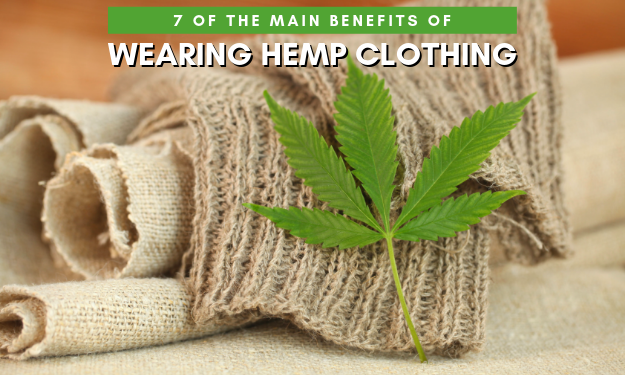Top Tips On Deciding On Bamboo Clothing
Wiki Article
What Are The Benefits Of Hemp Fibres With Low-Impact Clothing For The Environment?
Clothing made of low-impact hemp fiber has numerous environmental advantages compared to other clothing materials. This includes clothing made from synthetic fibers, or conventional cotton. Hemp clothing has many advantages for the environment. It grows very quickly and requires less water and pesticides. Hemp thrives in a wide range of climates and soil types. It also reduces the need of chemicals used in agriculture.
Hemp typically uses a lot less water than conventional cotton. Cotton is renowned for using plenty of water. Hemp clothing is water efficient because of this.
No Pesticides and Herbicides- Hemp can be cultivated without the need for synthetic herbicides or pesticides in many instances, which reduces the environmental impact of chemical agriculture.
Hemp is good for soil health. The roots are deep and stop erosion and compaction. It also keeps the soil in better condition for future cropping.
Biodegradability Hemp fibers are biodegradable and they degrade over time. They reduce the impact on the environment of textiles. Contrary to synthetic fibers, such as polyester may require many years to decay.
Low carbon footprint - Hemp fibers have a lower carbon footprint than synthetic materials. Hemp also acts as an absorber of carbon dioxide by absorbing it from the air during the growth process.
Durability- Hemp clothing is known for its durability and longevity. The best hemp clothing will last for many years, which reduces the necessity to replace them regularly.
Natural Pest Resistance- Hemp plants have natural resistance to many pests, reducing the necessity for chemical methods to control pests.
Hemp is a versatile material, since it can be used in many different textiles, such as bags, clothes and other accessories. It's a sustainable and fashionable fabric.
Regenerative Agriculture- Certain sustainable farming practices include hemp into regenerative agriculture systems that aim to enhance and maintain ecosystems while producing crops. This approach may be beneficial to the natural environment.
The dyeing process, transport as well as consumer behavior all have an impact on the overall sustainability. Like in every industry there could be variations in the methods of production and standards. So, to maximize the environmental benefits, it's best to select organic or sustainable hemp clothing. See the best breaking news for blog examples including patagonia hemp vest, patagonia double knee pants, hemp pants, patagonia iron forge jacket, patagonia hemp island pants, hemp fleece fabric, hemp sweatpants, hemp jacket, patagonia hemp shorts, hemp yoga pants and more.

What Are The Advantages Of Hemp Fibers With Regard To Carbon Sequestration?
Hemp fibers are a major contributor to carbon storage, sustainability, and crop rotation in many ways. They are an ideal choice for both agricultural and textile production.
Hemp has a rapid growth rate. It matures between 70 to 120 days based on the type of hemp and the growing conditions. During its rapid growth phase, hemp plants absorb carbon dioxide (CO2) from the atmosphere through photosynthesis. This carbon uptake contributes significantly to carbon sequestration, by cutting down the amount of CO2 in the air.
Hemp produces a lot of biomass. The tall stalks of the plant and dense foliage produce a significant quantity of organic matter. When the biomass is incorporated into soil or utilized in various applications, it could lead to the accumulation of organic matter and carbon.
Sustainability:
Minimal Chemical Use- Hemp cultivation typically requires less synthetic pesticides and herbicides in comparison to other crops, like cotton. Natural resistance to disease and pests decreases the need for chemical. The hemp industry that is organic, specifically, focuses on sustainability by avoiding synthetic chemicals.
Hemp has a high water-efficiency in comparison to traditional cotton. It is therefore more sustainable in regions with limited water resources.
Hemp roots are long and may assist in improving the soil's quality. The roots of hemp help to prevent soil erosion, by stabilizing the soil's structure and reducing runoff. Hemp cultivation also improves the activity of soil microbes by promoting the cycle of nutrient and overall soil fertility.
Hemp can be used in crop rotation. Crop rotation involves the alternation of different crops within the same field. This is a fantastic method to stop the cycle of pests and diseases, improve soil quality, and reduce soil depletion. The contribution of hemp to rotation of crops helps sustain farming practices.
Crop Rotation
Hemp can be incorporated into the rotation of crops along with other crops such as legumes, grains or vegetables. This can help farmers maintain the soil's quality as well as reduce the risk of pests, diseases and other issues related to crops, and promote a balanced process of nutrition.
Soil Improvement- Hemp's long roots can penetrate and aerate soil, reducing compaction and enhancing water infiltration. After hemp, the improved soil structure help subsequent crops.
In short, hemp fibers improve carbon sequestration, sustainability, and crop rotation techniques through their rapid growth, biomass production, minimal chemicals, water efficiency, positive impact on soil health, and compatibility with crop rotation methods. This makes hemp cultivation a green and sustainable agricultural practice. View the top hemp clothing info for website recommendations including patagonia work pants hemp, patagonia work pants hemp, hemp t shirt mens, patagonia hemp shorts, hemp golf shirts, mens hemp trousers, hemp t shirt mens, hemp fabric, hemp sportswear, patagonia hemp island pants and more.

What is the difference in hemp and bamboo fibers?
Both hemp and bamboo fibers are plant-based fibers that are utilized to make textiles. Each has distinct characteristic and properties. These are the main differences between hemp and bamboo fibers- 1. Plant Source-
Hemp- Hemp fibres are constructed from the bast of the stalks. Hemp has been utilized to serve a variety of purposes throughout the years. It is a fast-growing multi-purpose plant.
Bamboo fibers- Bamboo fibers come by removing the woody part of the bamboo plant. Bamboo is recognized as grass that grows with rapid growth, as well as its capacity to regenerate rapidly.
2. Fiber Specifications-
Hemp- Hemp fibers are known for their strength and durability. They are among the strongest natural fibres, and soften with every washing. This makes them ideal for fabrics that last.
Bamboo fibers are soft and silky, with a silky smooth texture. They are not as strong as hemp fibers and can be more delicate, however they are valued for their suppleness against skin.
3. Texture and Feel-
Hemp fabric is a bit coarse and has a textured feeling. This is evident in its natural state. It can be comfy however it has a different feel compared to bamboo.
Bamboo fabric is silky smooth and very soft. It's described as a mixture of silk and cotton, making it very comfortable to wear.
4. Breathability and Moisture-Wicking-
Hemp- Hemp is naturally breathable. It also absorbs water. They can help keep your body dry and cool in hot temperatures.
Bamboo fibers also have the ability to wick away water and are extremely air-tight. They're also equipped with micro-gaps which enhance their ability in regulating temperatures and humidity.
5. Environmental Impact-
Hemp Hemp can be regarded as an environmentally friendly fiber due to due to its rapid increase in growth, its low requirements for water, and its resistance against pests. These factors reduce the use of herbicides and pesticides. It also helps remove carbon dioxide from the atmosphere as it grows.
Bamboo is renowned for being ecologically sustainable. It grows quickly and requires very little water and doesn't require synthetic pesticides. Some bamboo varieties, like Moso bamboo are highly eco-friendly.
6. Processing-
Hemp- Hemp fibers require extensive processing to separate the outer bast fibers from the woody core. Processing can involve retting, decortication, and mechanical separation.
Bamboo Fibers of bamboo can be obtained using a chemical called the viscose process. This involves chemically cutting down bamboo pulp. This can be damaging for the environment if not managed in a responsible manner. However, certain bamboo textiles use closed loop methods that help reduce the amount of chemical waste.
7. Versatility-
Hemp- Hemp is versatile, with many uses including construction materials, clothing, textiles.
Bamboo Fibers- Bamboo fibres are utilized mostly in textiles and clothing however, they can be found in other items like bedding, towels and even towels.
Both hemp and bamboo have unique properties and offer the benefits of sustainability. The choice between them depends on the characteristics you are looking for in a fabric and your personal preference for sustainability. Read the best koraoutdoor.com outdoor clothing for more examples including bamboo yoga pants, carter's bamboo pajamas, bamboo sweatpants, jacket bamboo, bamboo cay shirts, bamboo childrens clothing, bamboo family pajamas, bamboo dress socks, bamboo clothing underwear, bamboo twirl dress and more.
